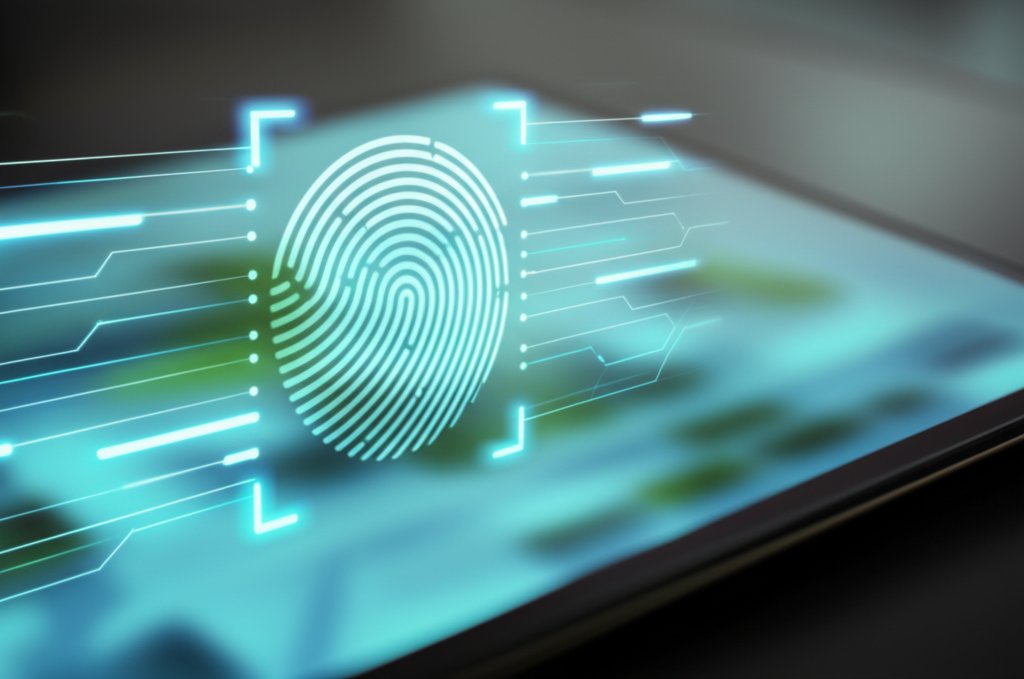The Truth About Passwordless Authentication: Separating Fact from Fiction for Everyday Users
Ah, passwords. For years, they’ve been the digital gatekeepers of our online lives, yet they often feel more like a persistent headache than a robust security measure. We’ve all endured the frustration: the complex rules, the constant forgetting, the tedious resets, and the nagging fear that one slip-up could expose our sensitive data. This isn’t just an annoyance; it’s a significant vulnerability that cybercriminals exploit daily, leaving individuals and businesses alike exposed to breaches and attacks.
But what if there was a better way? A path to digital security that was not only stronger but also simpler and more intuitive? This is precisely what passwordless authentication offers. It’s a groundbreaking shift in how we verify our identity online, moving beyond fragile memorized secrets to more robust, user-friendly methods. For anyone navigating the digital landscape – from managing personal finances to securing a small business – passwordless authentication isn’t just a convenience; it’s a vital upgrade to our collective cybersecurity posture.
In this article, we’ll demystify passwordless authentication. We’ll explore exactly what it is, delve into why it’s rapidly becoming the industry gold standard, and, most importantly, dismantle the common myths that often obscure its true value. Our mission is to empower you with the knowledge to take decisive control of your digital security, fostering confidence in an increasingly complex online world.
The Password Problem: Why Traditional Passwords Are a Flawed Foundation
Let’s be candid: traditional password-based authentication, even when bolstered by multi-factor authentication (MFA), still rests on a precarious foundation – human fallibility. Our memories are imperfect, our diligence can wane, and unfortunately, this makes us the weakest link in the security chain.
- Inherent Weaknesses: The reality is, we often create weak, predictable passwords (e.g., “Summer2024!”). We then compound this risk by reusing them across multiple services, turning a single compromised password into a master key for numerous accounts. This makes us easy prey for automated attacks like credential stuffing (trying stolen username/password combinations across different sites), brute force attempts (systematically guessing passwords), and dictionary attacks.
- Password Fatigue: Juggling dozens, if not hundreds, of unique, complex passwords for every online account is an overwhelming task. This “password fatigue” inevitably leads to risky shortcuts, undermining both personal cybersecurity and, critically, the security posture of small businesses.
- A Leading Cause of Data Breaches: It’s a sobering statistic: compromised credentials are consistently identified as a primary vector for data breaches. When cybercriminals infiltrate databases and steal hashed passwords, they often possess the tools to crack them, gaining unauthorized access to sensitive information. Traditional passwords, by their very nature, are a significant cyber threat.
What Exactly Is Passwordless Authentication?
If we’re moving away from passwords, what are we moving towards? Simply put, passwordless authentication enables you to log into online services, applications, or devices without ever typing a memorized password or any other knowledge-based secret. It represents a fundamental paradigm shift away from what you know to what you have or what you are.
A Simple Definition
Instead of relying on “something you know” (like a password), passwordless methods pivot to “something you have” (a trusted device like your smartphone or a security key) or “something you are” (unique biometric data such as a fingerprint or face scan). This crucial shift drastically enhances security by eliminating the need to remember and protect a secret that can be stolen, guessed, or phished.
How It Works (The Core Concept)
Imagine proving your identity not by whispering a secret phrase, but by presenting a unique, tamper-resistant key (your device) or by allowing a system to recognize your immutable physical traits (your fingerprint). The authentication system then cryptographically verifies your identity without ever needing to store or transmit a vulnerable password. This process is often instantaneous and far more secure.
Common Passwordless Methods Explained
Passwordless authentication isn’t a single technology but a family of solutions designed to replace traditional passwords. Here are some of the most common methods you’re likely already encountering or will soon:
- Biometrics: This is often the first thing people think of. It involves using your unique physical characteristics like fingerprints (e.g., Touch ID), facial recognition (e.g., Face ID), or even voice recognition to confirm your identity.
- Practical Context: Crucially, your biometric data is almost always stored and processed locally on your device (your phone, laptop, etc.), within a secure enclave, rather than being uploaded to remote servers. This design significantly enhances privacy and security.
- Magic Links: You’ve probably used these without realizing they are a form of passwordless authentication. A temporary, one-time use link is sent to your registered email address or phone via SMS. Clicking this link (after verifying the sender) logs you in directly.
- Practical Context: While highly convenient, always exercise caution. Be vigilant for phishing emails or SMS messages that try to trick you into clicking fake magic links. Always verify the sender’s legitimacy before clicking.
- Authenticator Apps/Push Notifications: Apps like Google Authenticator or Microsoft Authenticator generate time-based one-time passwords (TOTPs) or, more commonly, send a push notification to your smartphone for you to approve a login attempt with a simple tap.
- Practical Context: These methods are often combined with a biometric scan or PIN on your phone, adding an essential layer of security before you can approve the login, ensuring it’s genuinely you.
- Security Keys (e.g., FIDO2/WebAuthn, Passkeys): These are considered the gold standard for phishing resistance. A security key can be a small physical USB device or, increasingly, hardware built directly into your smartphone or computer. Passkeys are the modern, user-friendly implementation of FIDO2/WebAuthn, making this highly secure technology seamless across devices and operating systems.
- Practical Context: Security keys are designed to be highly phishing-resistant. They cryptographically verify the authenticity of the website you’re trying to log into before authenticating you, preventing you from accidentally giving away credentials to a fraudulent site. Passkeys offer the same level of security but are much easier to manage and use.
Why Passwordless is Becoming the Gold Standard: Concrete Benefits
The shift to passwordless authentication isn’t just about convenience; it’s driven by fundamental improvements in security and operational efficiency. Here’s why it’s rapidly being adopted as the preferred method by major tech companies and security experts alike:
1. Unrivaled Security Against Pervasive Threats
At its core, passwordless authentication significantly elevates your defense against the most common and devastating cyber threats. When there’s no password to type, there’s no password to:
- Be Phished: Attackers cannot trick you into entering a password onto a fake website because the authentication process (e.g., a passkey or security key) is cryptographically bound to the legitimate site’s domain.
- Be Stolen from a Database: If a service experiences a data breach, there are no passwords for attackers to steal, crack, and reuse. Your authentication credentials are tied to your device, not a central database of secrets.
- Be Guessed or Brute-Forced: Automated attacks designed to guess passwords become obsolete. Authentication relies on something you have or are, which is far more complex for an attacker to compromise remotely.
Real-world impact: Businesses using passwordless solutions report a dramatic reduction in phishing-related incidents, one of the most persistent and costly cyberattack vectors.
2. Enhanced User Experience and Productivity
Beyond security, passwordless authentication delivers a markedly superior user experience that saves time and reduces frustration for everyone.
- Frictionless Logins: Imagine logging in with a simple tap, a quick fingerprint scan, or a glance at your device. No more remembering complex strings, no more tedious typing on small mobile keyboards, and certainly no more “forgot password” workflows.
- Reduced Password Fatigue: The mental burden of managing countless unique, strong passwords disappears. This frees up cognitive load, allowing users to focus on their actual tasks rather than digital gatekeeping.
Real-world impact: For employees, this translates to less time wasted on password resets and more time focused on productive work, directly impacting a business’s bottom line.
3. Significant Reduction in IT Support Burden for Businesses
For small businesses, the operational costs associated with traditional password management are substantial but often overlooked. Passwordless authentication directly addresses these hidden expenses:
- Fewer Password Reset Tickets: A staggering percentage of IT help desk calls are related to password resets. Eliminating passwords significantly reduces this overhead, freeing up IT staff for more strategic initiatives.
- Lower Risk of Breach-Related Costs: The financial and reputational costs of a data breach stemming from compromised credentials can be devastating for a small business. Passwordless authentication acts as a preventative measure, reducing this risk dramatically.
Real-world impact: Businesses adopting passwordless report not only improved security but also tangible cost savings due to reduced IT support and increased employee efficiency.
Quick Comparison: Password-Based vs. Passwordless Authentication
When considering the future of digital identity, it’s essential to stack up the core differences between these two fundamental approaches for everyday users and small businesses.
| Feature |
Traditional Password-Based Authentication |
Passwordless Authentication |
| Core Method |
Memorized secret (password) |
“Something you have” (device) or “something you are” (biometric) |
| Security Against Phishing |
Highly susceptible (user can type password into fake site) |
Highly resistant (authenticates to verified origin, often device-bound) |
| Convenience / UX |
Often frustrating (forgetting, resets, complex rules) |
Fast, frictionless, easy (tap, scan, or approve) |
| Vulnerability to Data Breaches |
High (password databases can be stolen and cracked) |
Low (no passwords to steal, credentials are device-bound) |
| Implementation Cost (SMB) |
Low initial (user managed), high ongoing (IT helpdesk for resets, breach risk) |
Potentially higher initial (education, hardware keys), significantly lower ongoing (fewer resets, reduced breach risk) |
| Privacy Concerns |
Low for password itself; high if weak passwords reused lead to breaches. |
Low for biometrics (local storage); higher if sensitive data (e.g., email for magic links) is poorly handled by providers (unlikely with major ones). |
| Common Threats Eliminated |
None fully eliminated, only mitigated with strong practices/MFA. |
Credential stuffing, brute force, dictionary attacks, most phishing variants. |
Debunking Common Myths About Passwordless Authentication
Despite its clear advantages and growing adoption, passwordless authentication is still new to many. Like any innovative technology, it has gathered its share of misconceptions. Let’s address these myths head-on with factual explanations.
Myth 1: “Passwordless is Less Secure than Passwords or MFA.”
The Reality: This is arguably the most dangerous misconception. In truth, passwordless authentication is often more secure than traditional password-based systems, even those with multi-factor authentication (MFA). It fundamentally removes the password, which is the primary target for the vast majority of cyberattacks like phishing, credential stuffing, and brute force attacks.
- When there’s no password to phish, no password database to breach, and no password to guess, attackers lose their easiest entry points.
- While traditional MFA adds a second factor on top of a password, true passwordless authentication replaces the password entirely with stronger, often unphishable, factors like device-bound credentials (e.g., passkeys).
- Security experts consistently highlight how passwordless standards, particularly FIDO2/WebAuthn, offer superior phishing resistance compared to traditional password + SMS OTP or even app-based TOTP.
Corrected Understanding: Passwordless authentication significantly elevates security by eliminating the single biggest vulnerability: the password itself.
Myth 2: “Biometrics are Easily Spoofed or an Invasion of Privacy.”
The Reality: This myth often stems from sensationalized media or a misunderstanding of how modern biometric systems function. Your biometric data (fingerprint, face scan) used for authentication is typically stored securely and locally on your device (e.g., your smartphone’s secure enclave), not transmitted to external servers. Furthermore, advanced systems incorporate “liveness detection” to prevent spoofing with photos or masks.
- We must distinguish between authentication biometrics and surveillance biometrics. When you use Face ID to unlock your phone, that data remains on your device, under your control. It is not uploaded to a central database.
- Security frameworks like FIDO2/WebAuthn ensure that biometric verification happens on your device. Only a cryptographically signed assertion (a verification that you authenticated successfully, not your actual biometric data) is sent to the service you’re trying to access.
Corrected Understanding: Modern biometric authentication is engineered with robust privacy and anti-spoofing measures, ensuring your unique data stays local and secure on your device.
Myth 3: “It’s Too Complex and Expensive for Small Businesses/Everyday Users.”
The Reality: While adopting any new technology involves a learning curve, many passwordless solutions are designed for intuitive ease of use and are increasingly integrated directly into the devices and services we already utilize. For small businesses, while there might be an initial investment in user education or potentially some hardware (like security keys for critical staff), this cost is frequently offset by a significant reduction in IT support overhead related to password resets and credential recovery.
- Consider how effortlessly we use Face ID or Touch ID on our smartphones today; this level of user-friendliness is rapidly expanding across other platforms and services.
- For businesses, the hidden “cost” of traditional password management (IT tickets, lost productivity from lockouts, and the devastating risk of a breach) is far higher than many realize. Embracing passwordless can lead to substantial long-term operational efficiencies and a markedly reduced security risk.
Corrected Understanding: Passwordless solutions are becoming simpler and more affordable, offering significant long-term benefits in convenience and cost savings, especially for businesses.
Myth 4: “Passwordless Means No More Passwords Ever.”
The Reality: While the ultimate goal is to significantly reduce and eventually eliminate our reliance on daily passwords, it’s a transition. In certain scenarios, a traditional password might still exist as a fallback for account recovery or for accessing legacy systems, particularly during this transitional period. The primary objective is to make passwords unnecessary for daily logins and to secure the underlying recovery mechanisms with strong, often passwordless, methods.
- It’s important to manage expectations. You might still have one or two “master” passwords for very specific purposes (e.g., an encrypted backup drive, your password manager’s master password).
- However, for logging into your social media, banking, or work applications, the future is increasingly passwordless. Secure account recovery in a passwordless world involves robust identity verification, often through trusted devices or multi-factor processes, rather than just relying on easily phishable “forgot password” links.
Corrected Understanding: Passwordless authentication aims to eliminate daily password use, not necessarily every single password in every possible context, especially during a transition phase.
Myth 5: “It’s Not Widely Supported or Ready for Prime Time.”
The Reality: This couldn’t be further from the truth. Major technology giants like Apple, Google, and Microsoft are not just passively supporting but actively developing and integrating passwordless solutions (e.g., passkeys, FIDO2/WebAuthn) into their core ecosystems. This widespread adoption by industry leaders signals a monumental shift and confirms that the technology is very much “ready for prime time.”
- The FIDO Alliance, a consortium of hundreds of tech companies, has been instrumental in developing open standards like FIDO2 and WebAuthn. These standards ensure interoperability and robust security for passwordless solutions across diverse platforms and services.
- When the biggest players in technology are committed, it’s a clear indication that the technology is stable, secure, and prepared for broad public and business use. Many users are likely already utilizing forms of passwordless authentication without fully realizing it.
Corrected Understanding: Passwordless authentication is a mature and rapidly expanding technology, actively supported by industry leaders and widely available today.
A Closer Look at the Advantages: Why Passwordless Truly Wins
Let’s delve deeper into the key criteria where passwordless authentication truly shines, directly comparing it to the traditional password approach for a comprehensive understanding.
Criterion 1: Security Against Common Cyber Threats
- Traditional Passwords: Highly vulnerable to phishing, credential stuffing (where attackers try stolen password combinations from one site on another), brute-force attacks, and keyloggers. Even with MFA, if the first factor (the password) is compromised, the security chain remains vulnerable.
- Passwordless: Offers strong, inherent protection against these pervasive threats. Since there’s no password to phish or steal, attackers cannot perform credential stuffing or brute-force attacks. Technologies like FIDO2/Passkeys are explicitly designed to be phishing-resistant, meaning they only authenticate to the legitimate website, making it impossible for a user to accidentally authenticate to a fake site.
Winner:
Passwordless Authentication. It eliminates the root cause of many common cyber threats by removing the password itself.
Criterion 2: User Experience and Convenience
- Traditional Passwords: The bane of our digital existence. Characterized by endless rules, forgotten passwords, frustrating reset processes, and the constant mental load of remembering complex, unique strings for every service.
- Passwordless: A breath of fresh air. It offers faster, more convenient, and frictionless logins. Imagine simply tapping a notification on your phone, scanning your fingerprint, or using facial recognition – no typing, no remembering. This dramatically reduces frustration and wasted time on forgotten password resets.
Winner:
Passwordless Authentication. It’s objectively easier, faster, and more pleasant to use.
Criterion 3: Privacy Implications
- Traditional Passwords: The password itself doesn’t inherently have privacy implications beyond its secrecy. However, poor password hygiene (reusing, weak passwords) can indirectly lead to significant privacy breaches if an attacker gains access to multiple accounts through a single compromise.
- Passwordless: For methods like biometrics, privacy is often enhanced because your biometric data is stored locally on your device, within a secure enclave, not on remote servers. For magic links, your email or phone number is used, which is already a common identifier. The critical privacy advantage is that no central database of your “secret” exists to be breached and linked to your identity across multiple services.
Winner:
Passwordless Authentication. Especially with device-bound biometrics and passkeys, the localized storage of authentication data offers a stronger privacy model.
Criterion 4: Implementation Complexity & Cost (for SMBs)
- Traditional Passwords: Appear to have a low apparent setup cost (users just choose one). However, the hidden and ongoing costs for small businesses are high: IT support for password resets, lost employee productivity due to lockouts, and the devastating financial and reputational cost of a data breach.
- Passwordless: Initial setup might require a bit more user education or potentially a small investment in specific hardware (like security keys for high-value accounts). However, the long-term benefits include a significant reduction in IT support tickets, improved employee productivity (no more password frustration!), and a substantially lower risk of costly breaches. Many solutions are also becoming free or low-cost through seamless device integration (e.g., using your phone as a passkey authenticator).
Winner: While initial perception might incorrectly favor passwords due to “free” use, Passwordless Authentication clearly wins for overall reduced burden and total cost of ownership for small businesses when considering security, productivity, and IT support.
Criterion 5: Phishing Resistance
- Traditional Passwords: Highly vulnerable. A well-crafted phishing email or fake login page can trick even cautious users into entering their password onto a fraudulent website. If combined with SMS OTP, even that can sometimes be phished through clever social engineering.
- Passwordless: Offers superior resistance. Modern passwordless standards like FIDO2/WebAuthn and passkeys are specifically designed to be phishing-resistant. They cryptographically bind the authentication process to the legitimate website’s domain, meaning you cannot accidentally authenticate to a fraudulent site, even if you click a malicious link. The system simply won’t authenticate if the domain doesn’t match.
Winner:
Passwordless Authentication, definitively. This is one of its most compelling and critical advantages.
Pros and Cons: A Deeper Look
Let’s summarize the advantages and disadvantages of each approach for a quick reference.
Traditional Password-Based Authentication
- Pros:
- Universally understood and widely implemented (for now).
- Requires no special hardware beyond a keyboard.
- Can offer a fallback for account recovery, though often a vulnerable one.
- Cons:
- High vulnerability to phishing, brute-force attacks, and credential stuffing.
- User fatigue often leads to weak or reused passwords, creating massive risk.
- Frequent forgotten password resets are a significant drain on users and IT resources.
- Passwords stored centrally by services are prime targets for data breaches.
- Delivers a poor and frustrating user experience.
Passwordless Authentication
- Pros:
- Significantly enhanced security against pervasive cyber threats (phishing, credential stuffing).
- Superior user experience: fast, convenient, and frictionless logins.
- Reduces reliance on human memory and the need for complex password rules.
- Lowers IT support burden for small businesses by reducing password-related tickets.
- Biometric data is generally stored locally on devices, enhancing privacy.
- Industry-backed open standards (FIDO2, WebAuthn, Passkeys) ensure interoperability and robustness.
- Cons:
- May involve a minor learning curve during initial adoption for some users.
- Reliance on a trusted device; losing it requires understanding secure recovery methods.
- Not yet universally supported by all online services (though rapidly changing).
- Some initial investment (e.g., physical security keys) might be needed for specific, high-security use cases.
Use Case Recommendations: When to Choose What
For Everyday Personal Users: Embrace Passwordless Now
For your personal online accounts, the shift to passwordless authentication is largely a straightforward decision that enhances both security and convenience.
- Go Passwordless: For virtually all supported services, actively choose passkeys or other passwordless methods. Enable and use biometrics (fingerprint, facial recognition) on your phone and computer for authentication. It’s inherently more secure and dramatically more convenient.
- When Passwords Linger: Continue to use a strong, unique password for any legacy service that doesn’t yet support passwordless, ideally managed with a reputable password manager. You will likely also maintain an incredibly strong master password for your password manager itself.
For Small Businesses: Prioritize and Transition Strategically
Small businesses should make passwordless authentication a strategic priority to significantly boost their security posture and improve operational productivity.
- Prioritize Passwordless: Implement passwordless authentication for critical business applications first (e.g., email, cloud storage, CRM, accounting software). Utilize robust methods like FIDO2 security keys for administrators and passkeys for general employees where supported.
- Educate Employees: Proactive education is key. Train your team on the tangible benefits and practical steps of adopting passwordless methods. This will smooth the transition, foster user acceptance, and ensure compliance with new security protocols.
- Manage the Transition: For applications that are slow to adopt modern passwordless standards, enforce strong, unique password policies alongside strong MFA (e.g., authenticator apps, not SMS OTP). However, actively seek out and migrate to services that support modern, phishing-resistant authentication methods.
Final Verdict: The Clear Path Forward
After separating fact from fiction and meticulously weighing the evidence, the conclusion is unequivocal: Passwordless Authentication represents the future of digital security. It directly addresses the fundamental flaws and vulnerabilities inherent in traditional passwords, offering a far more robust defense against the relentless tide of cyber threats while simultaneously elevating the user experience to new heights.
For everyday internet users and small businesses alike, passwordless is not merely a futuristic concept or a fleeting tech buzzword; it’s a practical, accessible, and essential pathway to significantly improve your online safety and convenience. Embracing this evolution is not just smart; it’s imperative.
How Everyday Users and Small Businesses Can Start Going Passwordless
You don’t need to wait for a full industry overhaul. You can begin adopting passwordless authentication today, taking proactive steps to secure your digital life:
- Enable Biometrics on Your Devices: Most modern smartphones and computers offer fingerprint or facial recognition for unlocking the device and approving app logins. Make sure these are enabled and regularly used for convenience and enhanced security.
- Look for Passkey Support: When you encounter options like “Sign in with Google,” “Sign in with Apple,” or direct “Sign in with a Passkey” on websites and apps, actively choose them! They are becoming more common and offer superior security and ease of use.
- Use Authenticator Apps: If an app doesn’t yet support passkeys directly, adopt authenticator apps like Google Authenticator or Microsoft Authenticator for 2FA. Many services are moving towards allowing these apps to facilitate passwordless logins via push notifications.
- Consider Security Keys: For your most highly sensitive accounts (e.g., your primary email, cloud storage, or financial services), a physical FIDO2 security key offers robust, phishing-resistant protection. They are affordable, incredibly effective, and an excellent investment in your security.
- Educate Employees (Small Businesses): Make digital security a collective effort. Train your employees on the advantages of passwordless methods and guide them through setting up passkeys or authenticator apps for business applications. This isn’t just about security; it’s about fostering productivity, reducing IT overhead, and achieving greater peace of mind. For more insights, refer to Master Passwordless Authentication: Boost Security & UX.
Frequently Asked Questions (FAQ) About Passwordless Authentication
Q1: Is my biometric data sent to a server when I use passwordless authentication?
A: Almost never for authentication purposes. Modern passwordless systems, especially those using FIDO2/WebAuthn or passkeys, are meticulously designed to keep your biometric data (like your fingerprint or face scan) stored securely and locally on your device (e.g., within your phone’s secure enclave). Only a cryptographically signed confirmation that you’ve successfully authenticated is sent to the online service, never your actual biometric data itself. This design significantly enhances your privacy.
Q2: What happens if I lose my device that I use for passwordless authentication?
A: This is a common and entirely valid concern. Most passwordless systems incorporate robust recovery mechanisms. For passkeys, they are often synced across your trusted devices (like your phone, tablet, and computer) via encrypted cloud services (e.g., Apple iCloud Keychain, Google Password Manager), so losing one device typically does not mean losing access to all your accounts. For physical security keys, it is strongly recommended to always have a backup key. For other methods, services typically offer alternative recovery paths, such as using a backup code or verifying your identity through another trusted method, like a recovery email or another linked device, often with an added waiting period for security.
Q3: Will all websites and apps offer passwordless authentication soon?
A: The adoption rate is rapid, but it is a gradual process. Major tech companies like Apple, Google, and Microsoft are heavily investing in and implementing passwordless technologies like passkeys and FIDO2, which is significantly accelerating widespread availability. Many popular services already support some form of passwordless login (such as “Sign in with Google/Apple” or via authenticator apps). While it will take time for every single website to fully catch up, the trend is clear, and we are definitively moving towards a future where passwordless is the default for most online interactions.
Conclusion
The journey towards a passwordless future is not merely a futuristic concept; it is a secure, user-friendly reality that directly addresses many of the long-standing and fundamental problems inherent in traditional passwords. From significantly enhancing your personal security against pervasive threats like phishing to streamlining operations and reducing IT burdens for small businesses, the benefits are undeniable and compelling.
We strongly urge you to embrace this pivotal shift. Begin exploring and adopting the passwordless options available to you today for a markedly safer, more efficient, and undeniably more convenient online experience. The truth about passwordless authentication is clear: it’s simpler, it’s far more secure, and it’s ready for you.
Which myth about passwordless authentication surprised you most? Share this article to help others discover the truth and take control of their digital security!








